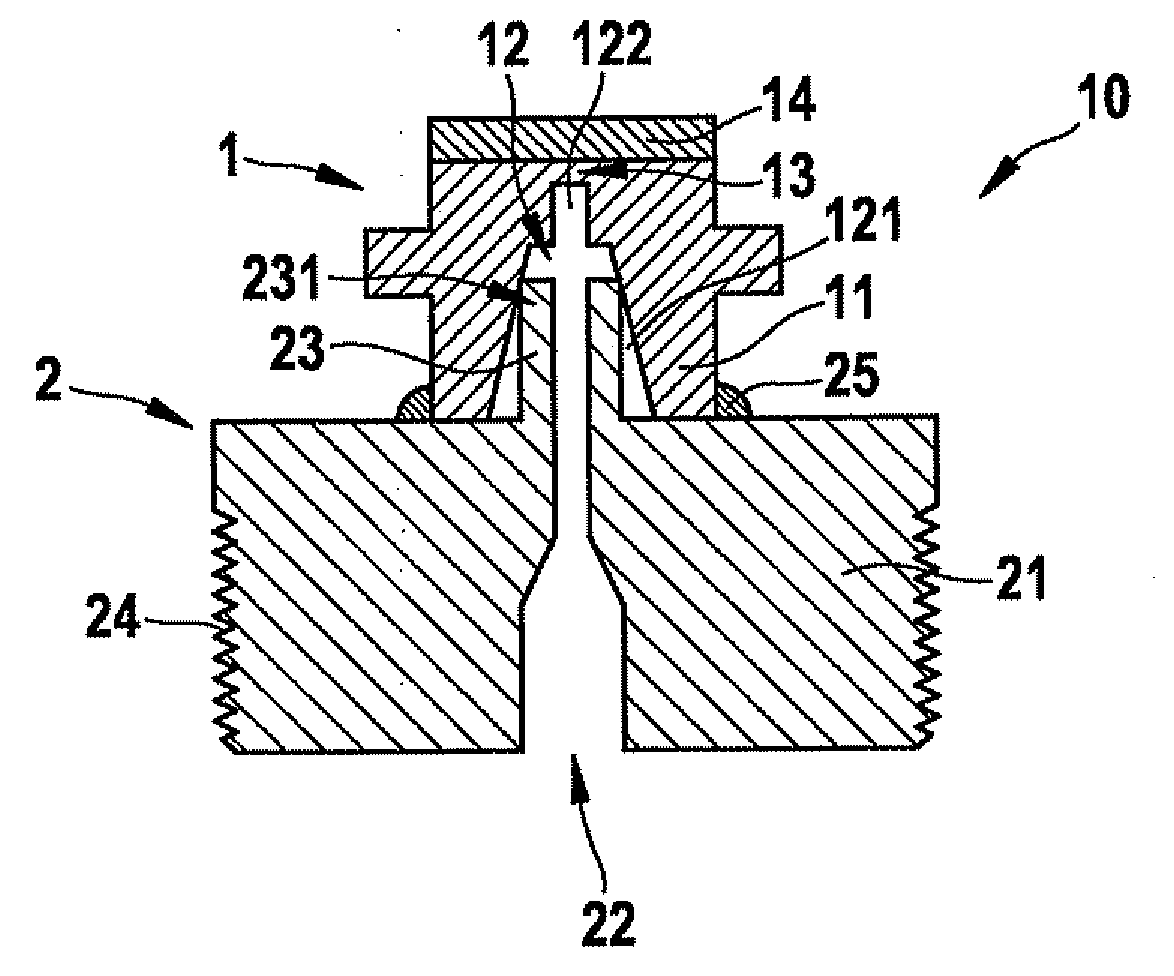High pressure sensor
a high-pressure sensor and sensor element technology, applied in the direction of fluid pressure measurement by mechanical elements, fluid pressure measurement using elastically deformable gauges, instruments, etc., can solve the problem of complicated production of welded connections having reproducible mechanical properties, difficult mounting of sensor elements on connector pieces, etc., to achieve simple and economical production
- Summary
- Abstract
- Description
- Claims
- Application Information
AI Technical Summary
Benefits of technology
Problems solved by technology
Method used
Image
Examples
Embodiment Construction
[0013]High-pressure sensor 10 depicted in the FIGURE encompasses a sensor element 1 for pressure sensing and a connector piece 2 for coupling sensor element1 to a measured system (not depicted here). Both sensor element 1 and connector piece 2 are fabricated from a respective metal base element 11, 21.
[0014]A blind opening 12 has been produced in base element 11 of sensor element 1 in order to expose a diaphragm 13 in the oppositely located surface of base element 11. This blind opening 12 has an opening region 121, tapering conically toward diaphragm 13, that transitions into a cylindrical end region 122. A functional layer 14 having circuit elements for sensing diaphragm deformations has been applied onto diaphragm 13.
[0015]A through conduit, constituting a pressure conduit 22 having a tubular prolongation 23, is embodied in base element 21 of connector piece 2. The circular cross section of pressure conduit 22 tapers, in the middle region of base element 21, down to the cross-sec...
PUM
| Property | Measurement | Unit |
|---|---|---|
| pressure | aaaaa | aaaaa |
| pressures | aaaaa | aaaaa |
| pressure | aaaaa | aaaaa |
Abstract
Description
Claims
Application Information
 Login to View More
Login to View More - R&D
- Intellectual Property
- Life Sciences
- Materials
- Tech Scout
- Unparalleled Data Quality
- Higher Quality Content
- 60% Fewer Hallucinations
Browse by: Latest US Patents, China's latest patents, Technical Efficacy Thesaurus, Application Domain, Technology Topic, Popular Technical Reports.
© 2025 PatSnap. All rights reserved.Legal|Privacy policy|Modern Slavery Act Transparency Statement|Sitemap|About US| Contact US: help@patsnap.com


